10 PR Myths in 2025, And What the Data Actually Shows

Public relations is at a turning point. Traditional tactics and the rise of generative AI has reshaped how audiences discover and trust information.
\
As the industry shifts, assumptions naturally emerge. Many of these assumptions sound logical, but fresh data reveals that they don’t hold up in practice. The gap between traditional PR instincts and modern day PR realities is where the next wave of innovation will occur.
\
Here are ten of the most common PR myths circulating in 2025 , and what the latest data shows instead.
\
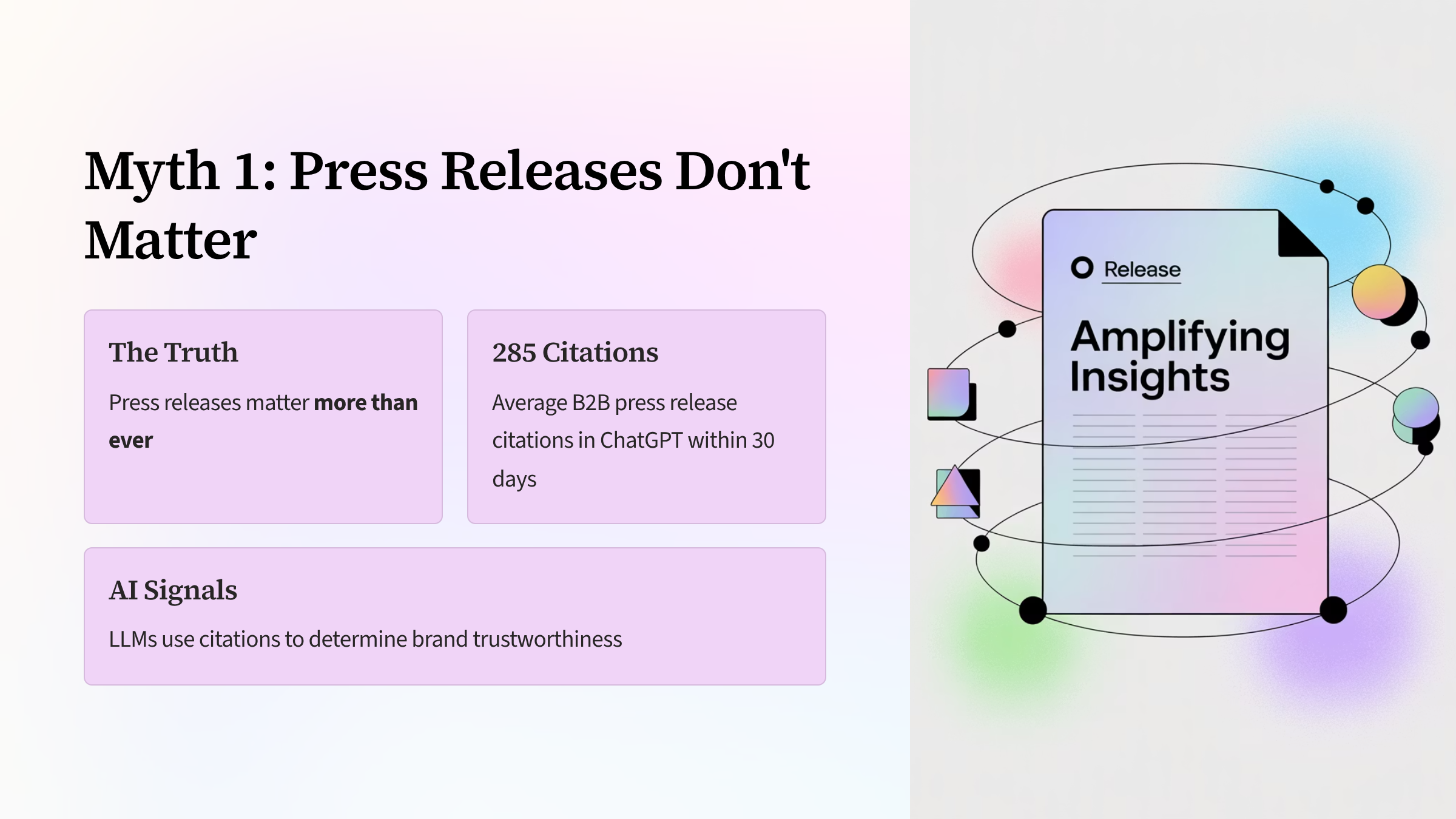
Myth 1: Press releases don’t matter anymore
\
Truth: Press releases matter more than ever. \n
Recent data shows that even niche B2B press releases average nearly 285 citations in ChatGPT within 30 days. These citations aren’t surface-level impressions, they are signals large language models (LLMs) use to decide whether a brand is trustworthy and relevant. In modern PR, a single release can influence thousands of downstream AI answers.
\
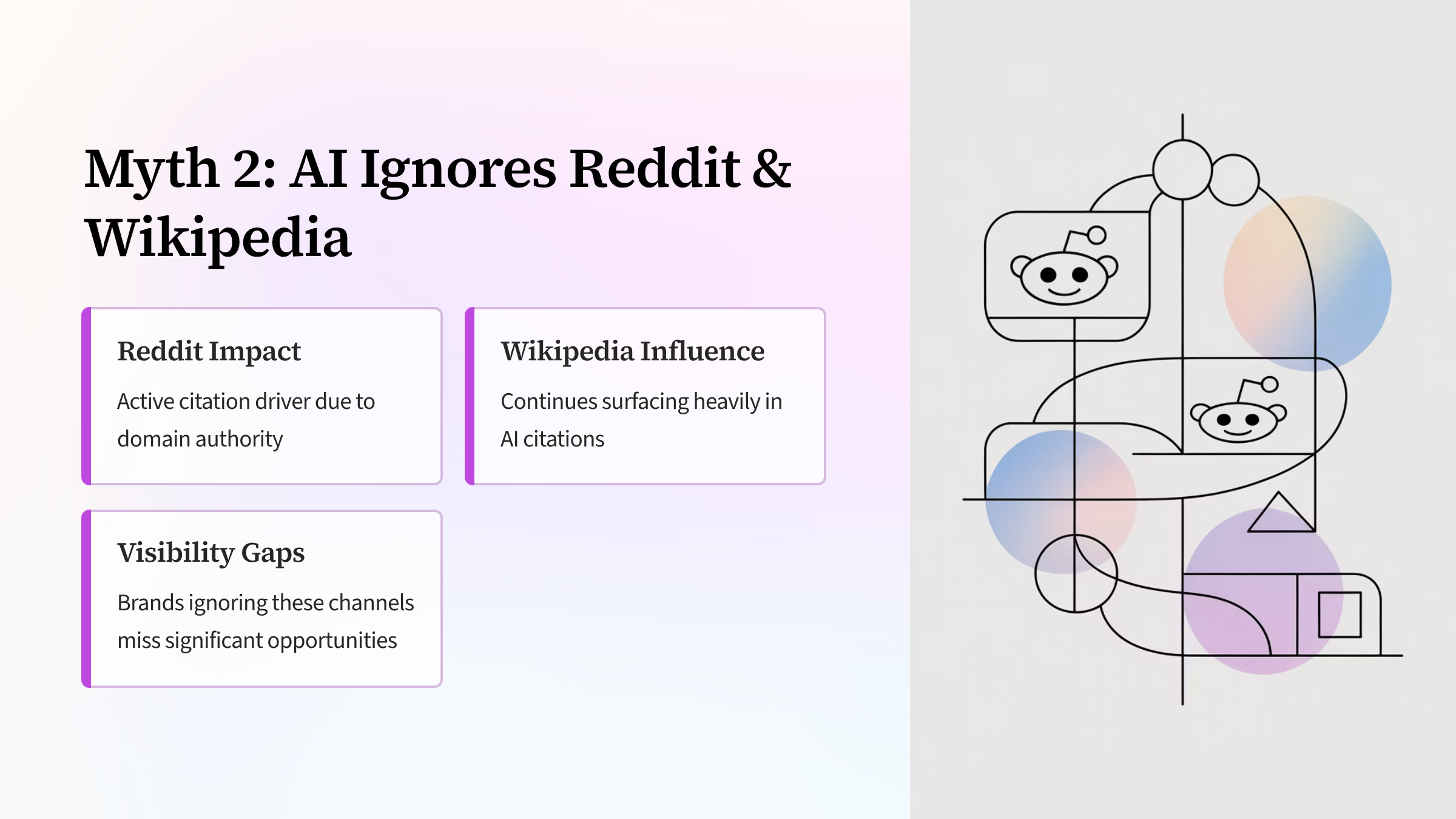
Myth 2: Generative AI ignores Reddit and Wikipedia
\
Truth: Both sources remain active citation drivers. \n
Despite ongoing debates, Reddit and Wikipedia still surface heavily in AI citations because of their domain authority. Independent third-party providers and internal developer audits confirm their continued influence. Brands that fail to account for these channels leave significant gaps in visibility.
\
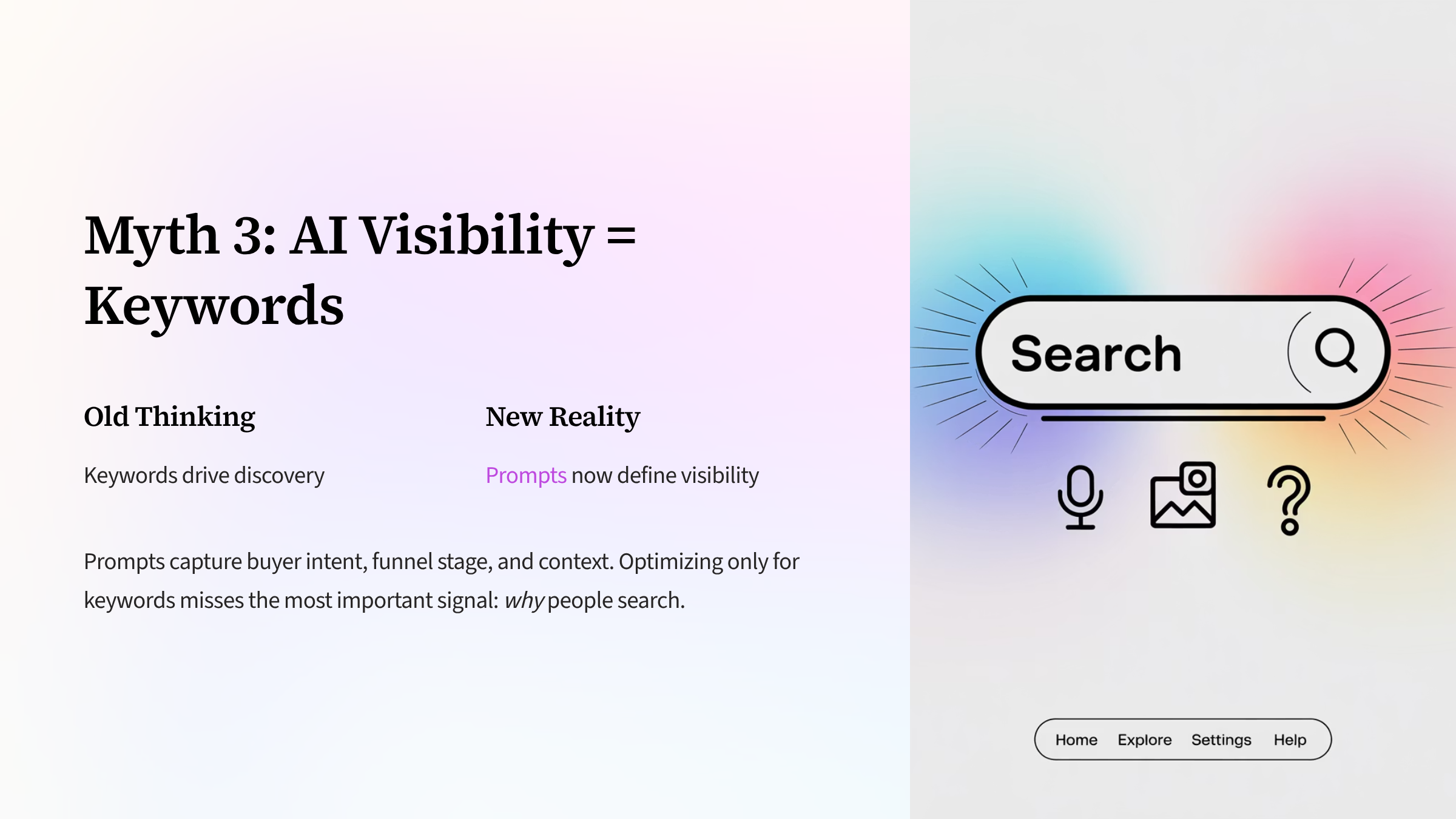
\
Myth 3: AI visibility = keywords
\
Truth: Prompts now define visibility. \n
Keywords remain useful, but prompts — the actual questions typed into LLMs — drive discovery. Prompts capture nuance such as buyer intent, funnel stage, and context. Optimizing only for keywords misses the most important signal: why people are searching.
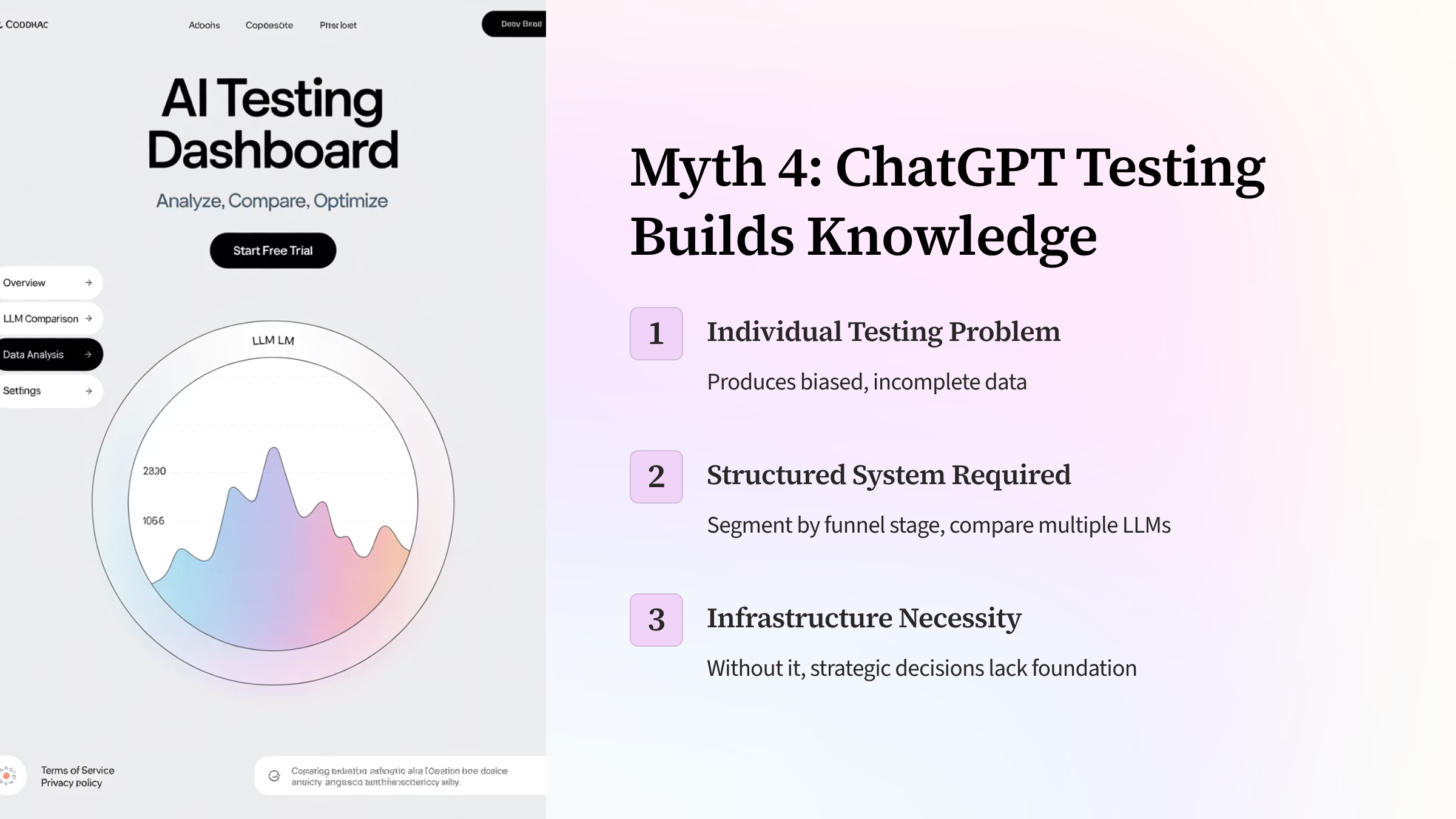
\
Myth 4: Prompt testing in ChatGPT can build a reliable knowledge bank
\
Truth: Individual prompt testing produces biased and incomplete data. \n
A structured system is required to understand visibility: one that segments by funnel stage, compares across multiple LLMs (ChatGPT, Gemini, Perplexity, Grok), and isolates “buy” signal prompts. Without infrastructure, organizations risk making strategic decisions on incomplete data sets.
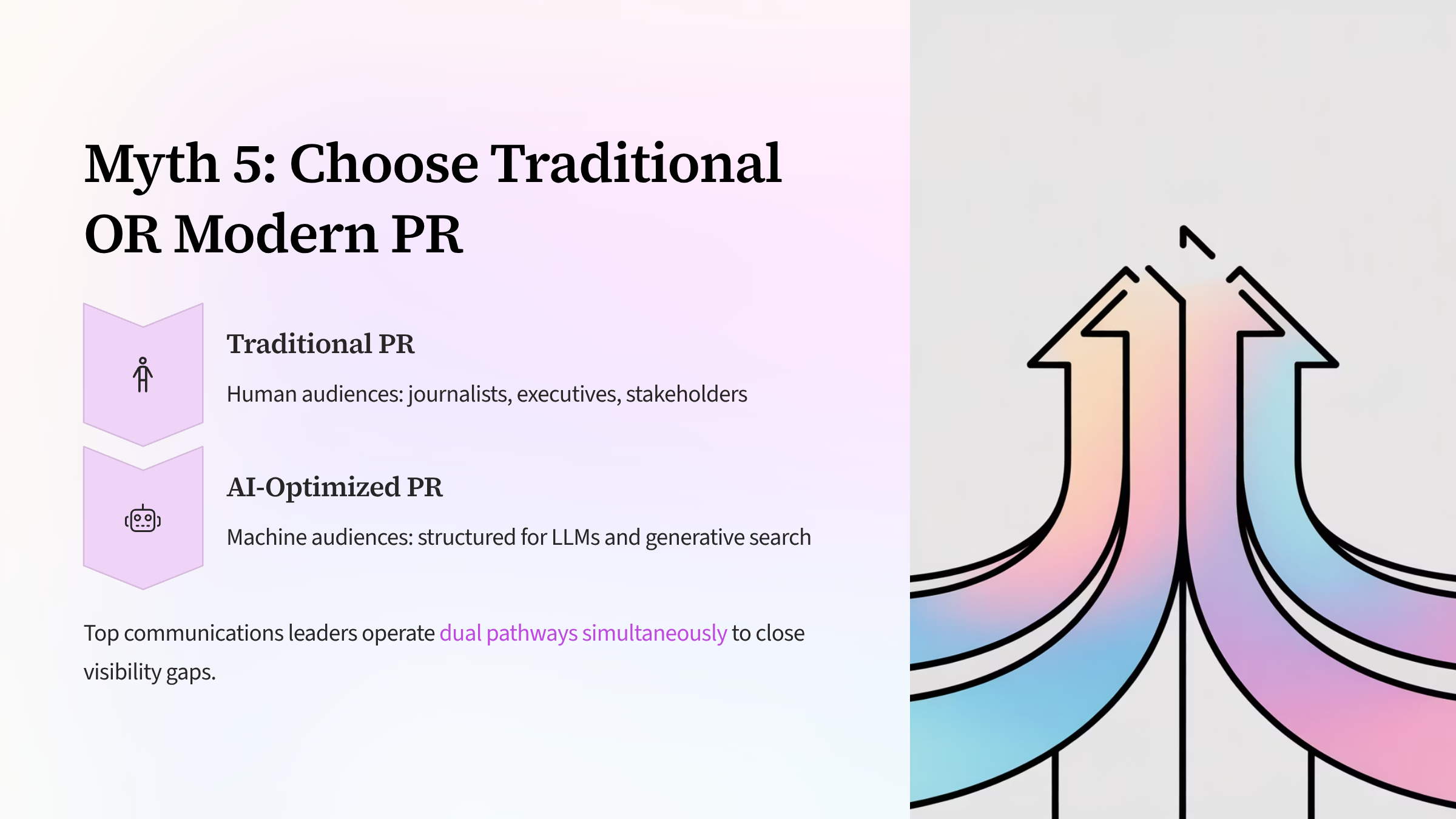
Myth 5: PR requires choosing between traditional and modern methods
\
Truth: The strongest strategies run a dual pathway. \n
Modern day PR is not an either/or decision. Top communications leaders operate in two lanes simultaneously:
\
- Traditional PR for human audiences such as journalists, executives, and stakeholders.
- AI-optimized PR for machine audiences, where content must be structured for LLMs and generative search.
\
This dual pathway approach closes visibility gaps and ensures relevance across both human and machine ecosystems.
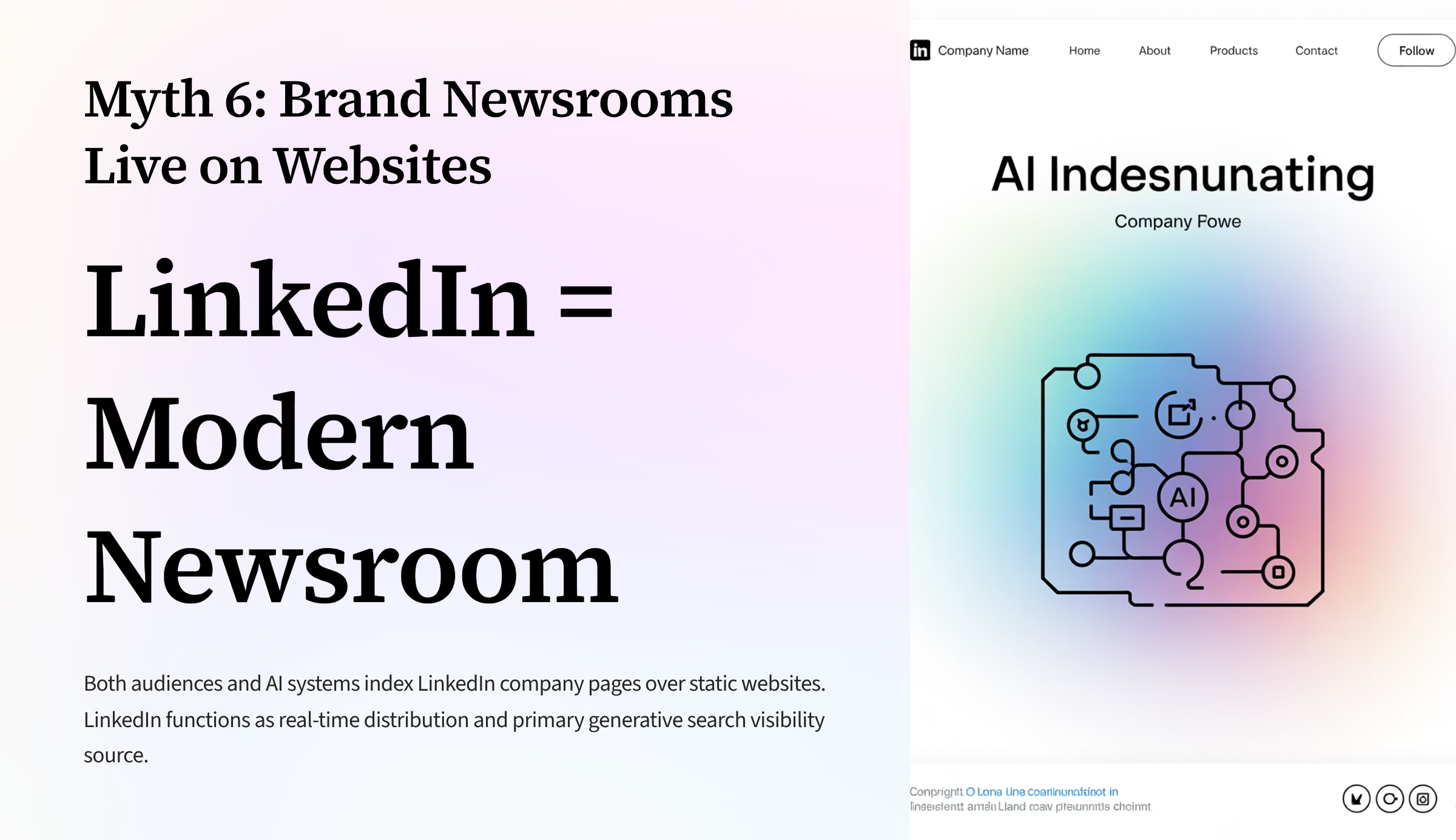
Myth 6: Brand newsrooms live on corporate websites
\
Truth: LinkedIn has become the modern newsroom. \n
Increasingly, both audiences and AI systems index LinkedIn company pages over static newsroom websites. LinkedIn functions as a real-time distribution channel and is now one of the primary sources where brands achieve visibility in generative search.
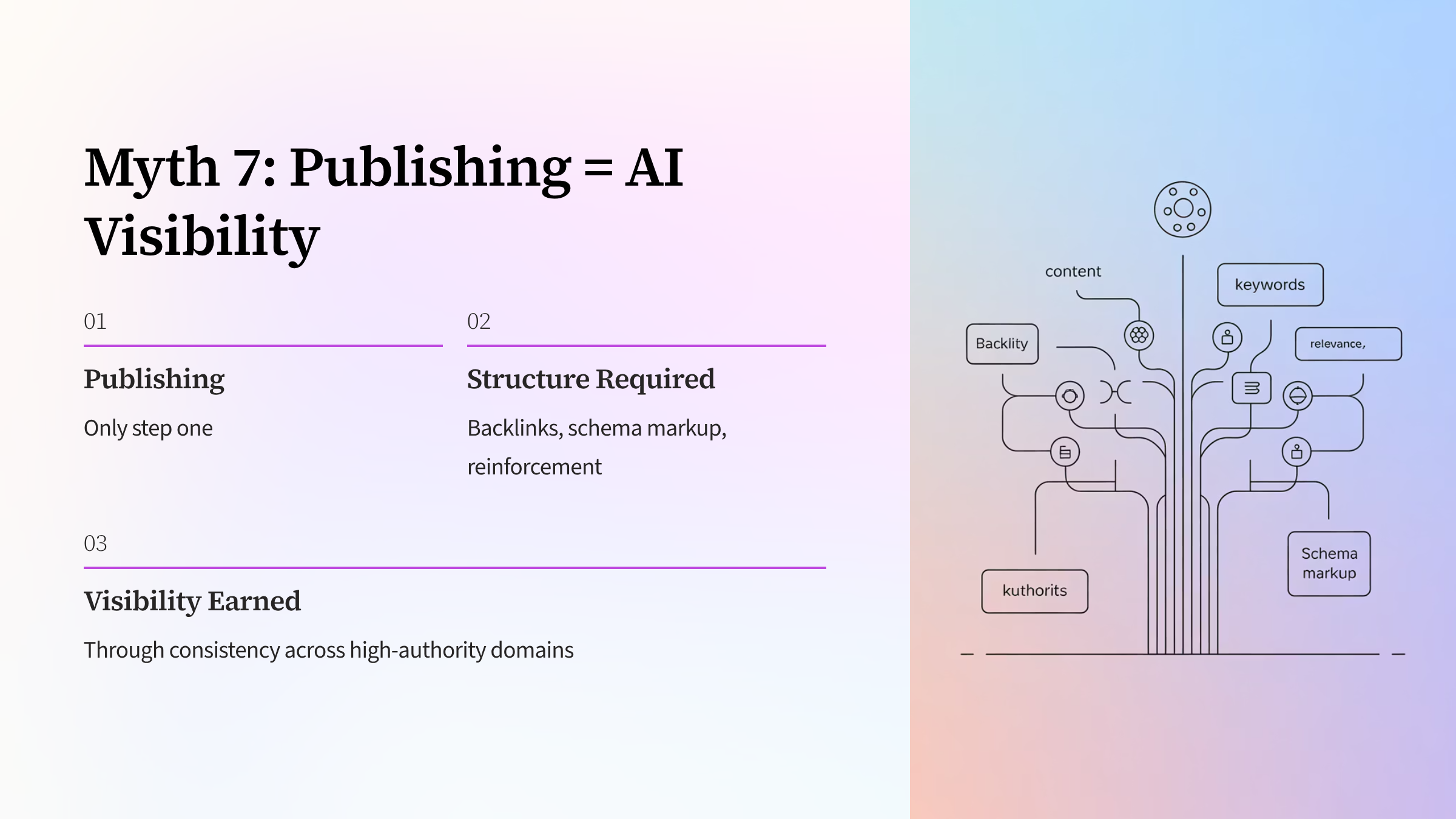
Myth 7: Publishing content automatically ensures AI visibility
\
Truth: Publishing is only step one. \n
LLMs prioritize structured signals including backlinks, schema markup, and repeated reinforcement across multiple high-authority domains. Without these signals, even high-quality content may remain invisible in AI-generated answers. Visibility is earned through structure and consistency, not publishing alone.
\
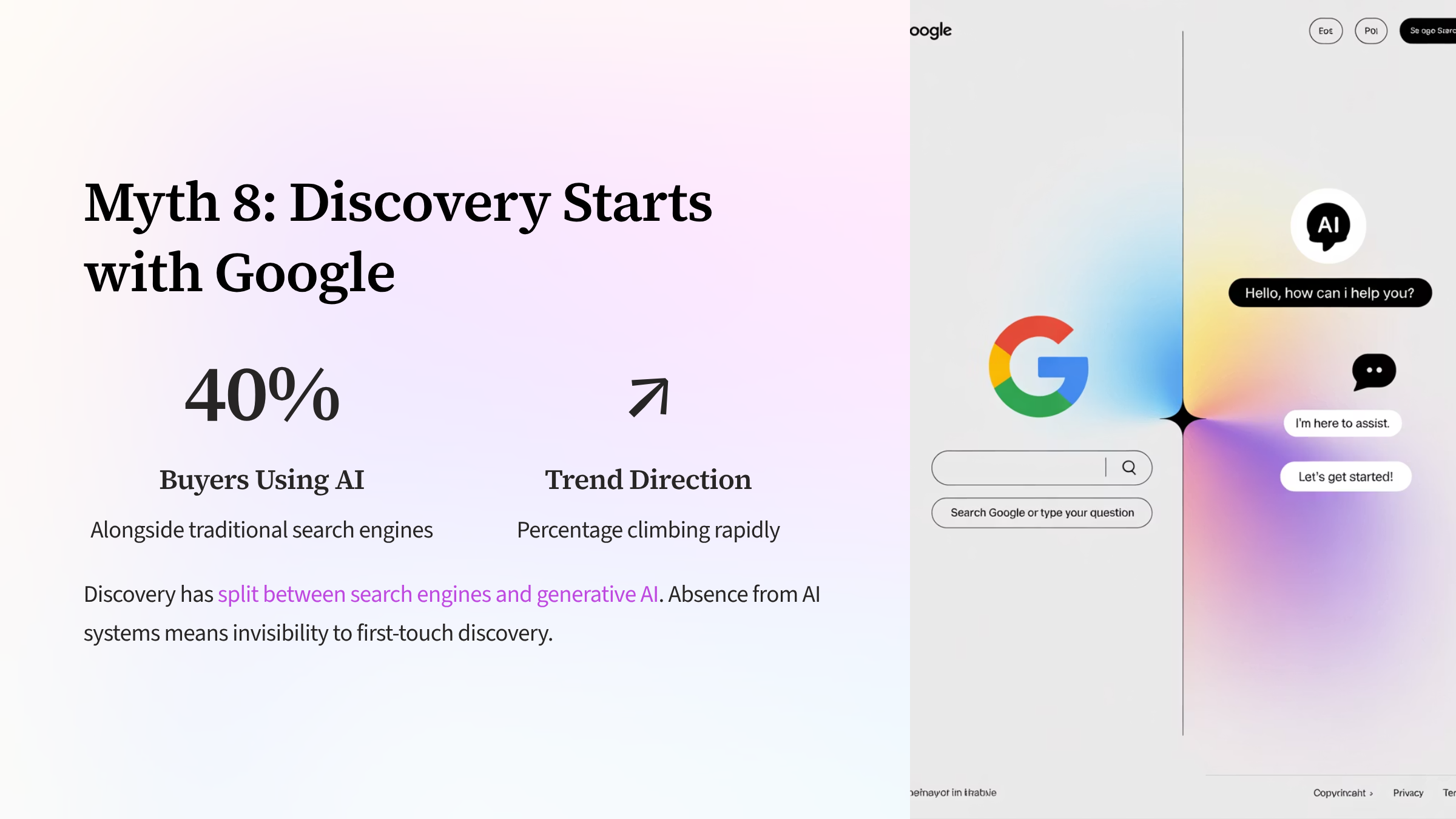
Myth 8: Audience discovery starts with Google
\
Truth: Discovery has split between search engines and generative AI. \n
More than 40% of buyers now use generative AI alongside traditional search engines, and that percentage is climbing. The journey no longer begins and ends with Google. For PR teams, absence from generative AI systems means invisibility to a large share of first-touch discovery.
\
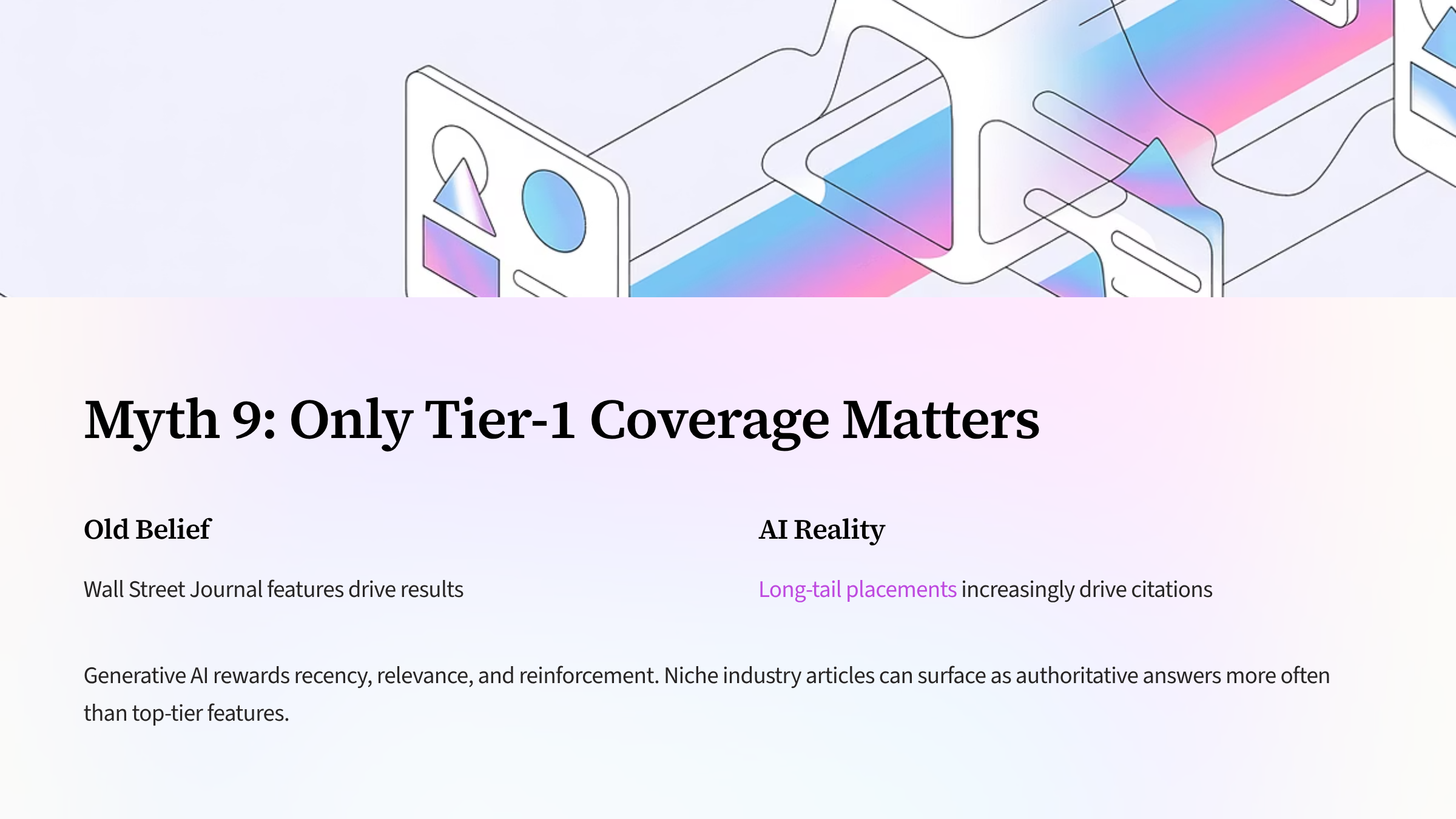
Myth 9: Only tier-1 coverage matters
\
Truth: Long-tail placements increasingly drive AI citations. \n
Generative AI rewards recency, relevance, and reinforcement. That means a niche industry article can surface as the authoritative answer more often than a Wall Street Journal feature that isn’t repeated elsewhere. In the AI era, both top-tier and long-tail placements carry weight.
Myth 10: PR is only valuable under marketing’s budget
Truth: PR has its own measurable baseline. \n
PR is no longer defined by impressions or vanity metrics. New benchmarks include:
\
- Prompt share of voice
- Citation frequency across LLMs
- Generative visibility
\
These measures establish PR as a standalone driver of brand authority — not simply a subset of marketing.
\
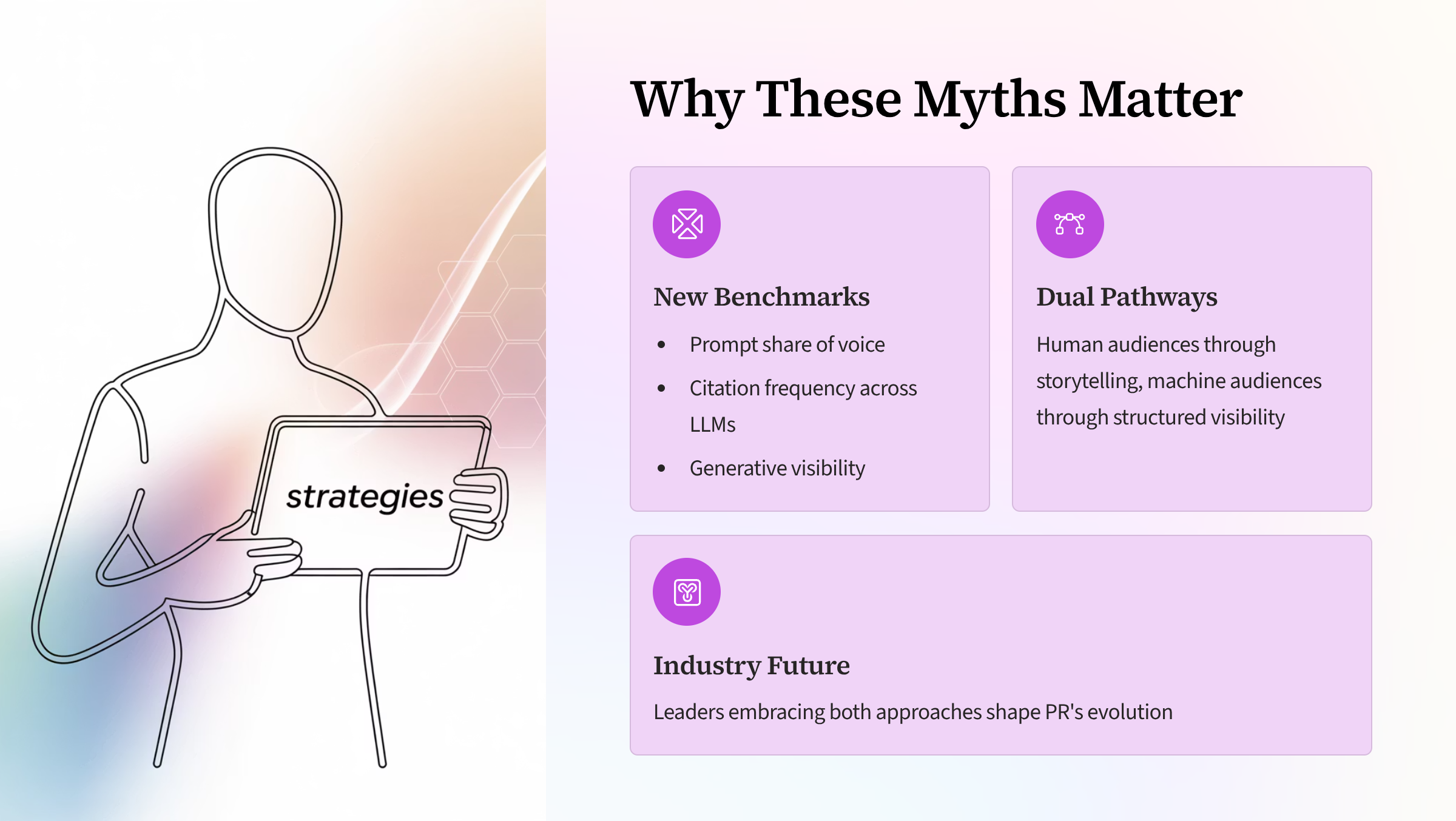
Why These Myths Matter
\
The persistence of these myths is not a sign of failure. They are the natural result of an industry adapting to rapid change. What matters is the ability to separate assumptions from data.
\
Modern day PR now requires strategies that perform across dual pathways: human audiences through traditional storytelling, and machine audiences through structured, AI-optimized visibility. The communications leaders who embrace both are the ones shaping the future of the industry.








